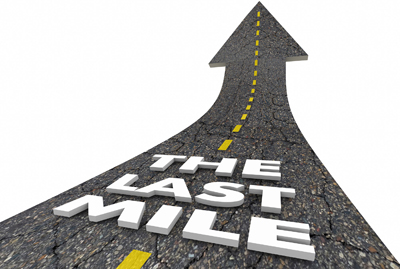Companies look to innovative solutions as pressure intensifies in the last mile of deliveries. Automation and robotics are receiving heavy investment and research, and offer some of the most promising possibilities.

By Tom Gresham
Increasing efficiency in the final mile of delivery has become an obsession in the supply chain logistics field as companies explore an array of solutions to keep up with the intense demands that e-commerce and delivery-hungry consumers have brought—demands that have only strengthened during the COVID-19 pandemic. Among the innovative solutions that are receiving heavy investment and research, automation and robotics offer some of the most eye-catching and promising possibilities.
In fact, when it comes to the influence that automation and robotics could have on last-mile delivery, Karen Tyndall, director of customer solutions for GlobalTranz, a logistics services provider and 3PL offering freight management technology and services, said “the sky is the limit.”
Jon Barad, vice president of business development for Velodyne Lidar, a provider of solutions for autonomy and driver assistance, said finding efficiencies in the final mile carries heightened importance because “this can be one of the most expensive segments of shipping as delivery to endpoint customers requires more vehicles and personnel to get packages from central distribution centers out to the end customer’s house or business. This requires multiple door-to-door stops and possibly return visits should the package be undeliverable.”
In addition, the rise of e-commerce has put a premium on speed as “customers expect their shipments to come quickly, with real-time notifications and in excellent condition,” Barad said. World Economic Forum researchers said same-day and instant delivery were the “fastest-growing segments in the last-mile environment,” and they estimated same-day deliveries will account for 15% of all products ordered online in the U.S. by 2025.
“Companies are understanding the importance of maintaining a really good, predictable and precise delivery experience for their customers—understanding that that ultimately drives brand loyalty,” Tyndall said.
Brad Ruffkess, the founder and CEO of BoxLock, which offers secure, contactless delivery solutions, emphasized that the final mile of delivery represents not only a challenge but a chance to make major efficiency gains.
“If you’re looking for an opportunity to save money and you’re looking where to have the greatest impact, then the last mile is a very attractive area to focus on,” Ruffkess said.
Barad said increasing the use of automation to augment physical human delivery can serve to drive down costs and increase delivery speed, and Tyndall said automation can create scale and drive improvements.
Beyond efficiency, Ruffkess said the final mile also includes the vital interaction point that comes with the handoff to the customer—a crucial final touch point that leaves a lasting impression on a customer. Barad added that automation and robotics offers the increasingly valued benefit of touchless delivery at that handoff, as well as elsewhere in the process.
“In this current pandemic environment, it is essential to find ways to move goods, such as hospital supplies, with minimal human contact to help reduce spread of disease,” Barad said. “Furthermore, it is possible for automated vehicles/robots to enter high-risk areas without compromising the well-being of humans.”
 MHI Solutions Improving Supply Chain Performance
MHI Solutions Improving Supply Chain Performance